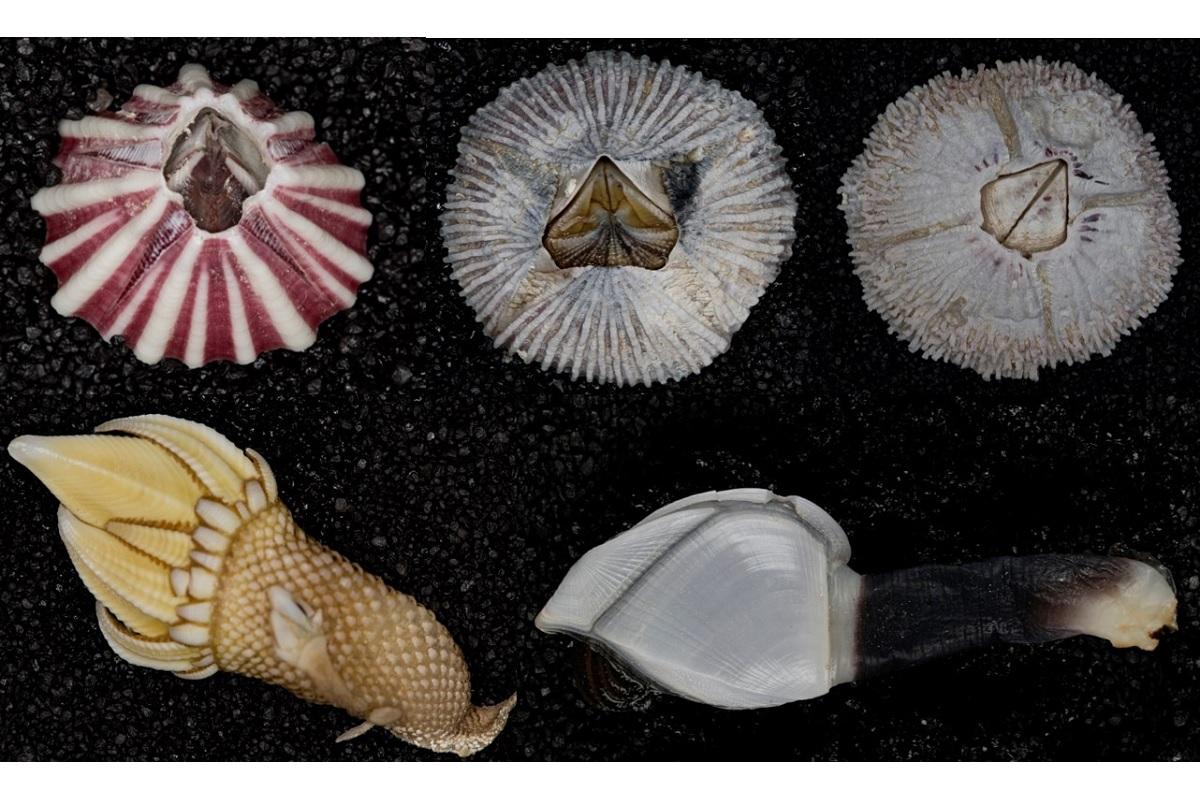Past, present and future: Integrative taxonomy and phylogeny of barnacles (Crustacea: Cirripedia) from Eastern Indonesia
This is a good spot. Pipit Pitriana is snorkelling, about 50 metres off the beach of Rutong on Ambon Island, one of the large Maluku Islands in Eastern Indonesia. It is mid-tide and the lukewarm water is about one metre deep.
On a rock below the surface, she finds a patch of some fifty barnacles filtering the water for food. The animals quickly retract their feathery limbs and close their shells as Pitriana approaches. The researcher takes a picture of the group and then pries several specimens from the rock to identify the species – and to advance the knowledge about these animals in this biodiversity hotspot area.
Distribution and DNA
“There are few people working on barnacles in Indonesia,” says Pitriana, who is a doctoral student at the Indonesian Institute of Sciences (LIPI) and currently based at the Museum für Naturkunde Berlin. For her PhD thesis, supervised by Kristina von Rintelen at the museum, Pitriana is gathering data on the occurrence, distribution, and ecology of barnacles focusing on the Maluku Islands of Eastern Indonesia.
Re-visiting the biogeography of these animals promises the discovery of new species. The latest report is based on results of the Dutch zoological and hydrographic Siboga Expedition in 1899. “A lot of data on the ecology of barnacles is still missing,” says Pitriana, who is establishing a biodiversity database for eastern Indonesia. The high diversity in the region is believed to be due to the exchange of seawater between the Pacific Ocean, the Indian Ocean and the South China Sea.
Barnacles belong to the Crustacea. They are marine and the adult forms are sessile, filtering organic substance from the seawater. Barnacles have larval stages that are free-swimming and attach themselves to surfaces like rocks, coral and boats and sometimes, living organisms like turtles, whales or sponges. For the latter, Pitriana is investigating whether the nature of the association is symbiotic or parasitic. Micro-CT scans of samples reveal how the barnacles attach themselves to the surface of the sponges.
During her fieldwork, Pitriana collects barnacles from tidal areas and documents the sites with a camera. She also collects barnacles from depths of up to 20 metres while scuba diving. Furthermore, she includes specimens of deep-sea barnacles from the Muséum national d’histoire naturelle in Paris in her study that have been collected at depths of up to 1266 metres.
The biologist can classify the barnacles by looking at the shells, but to identify species she has to dissect the specimens to inspect mouthparts like the mandibles more closely. In samples from five of the larger Maluku Islands, Pitriana recorded 99 species, including 23 species new to the record and two of them yet undescribed.
To obtain insights into the phylogeny of the species she combines the observational data with molecular data from DNA sequencing. Investigating the patterns of distribution of the species may provide insights into the origin of barnacles in this area.
Funding:
The Ministry of Research, Technology and Higher Education, the Republic of Indonesia within the Program for Research and Innovation in Science and Technology (RISET-Pro)
Duration:
January 2018 to October 2020
